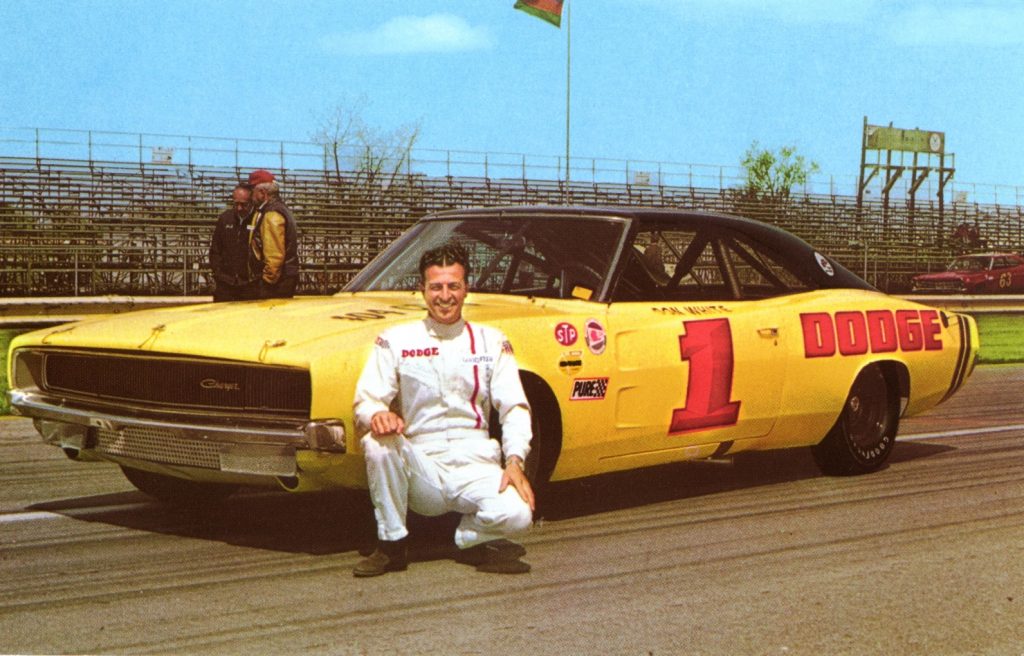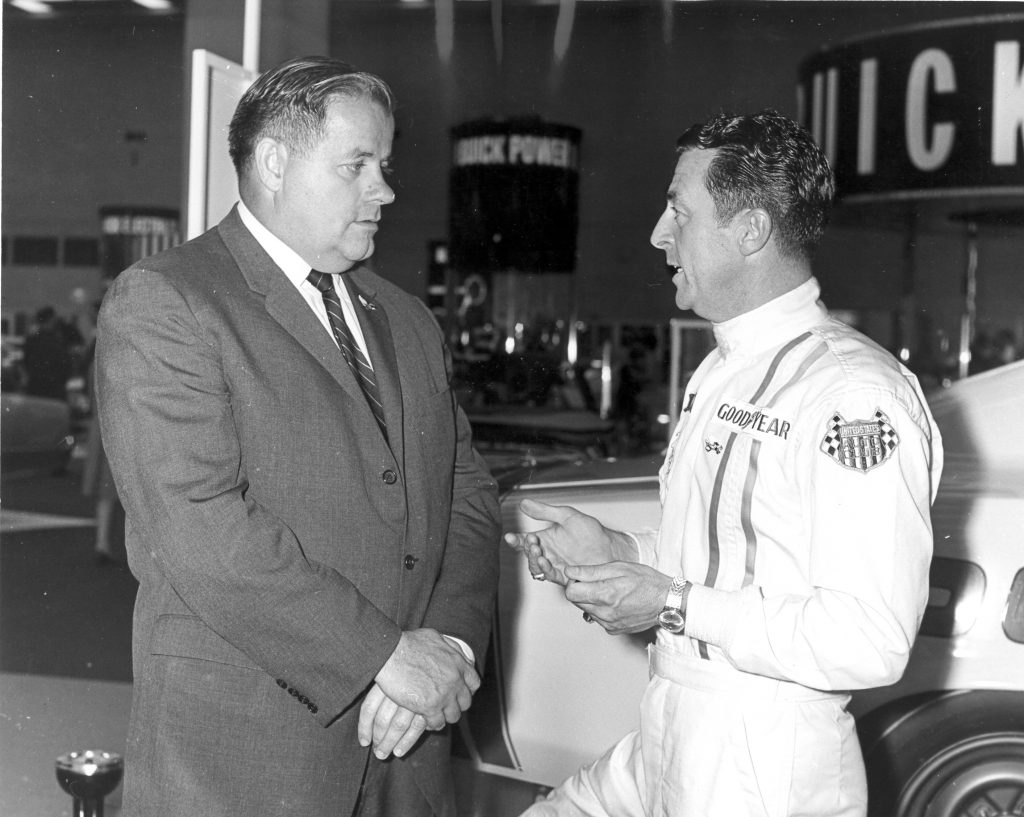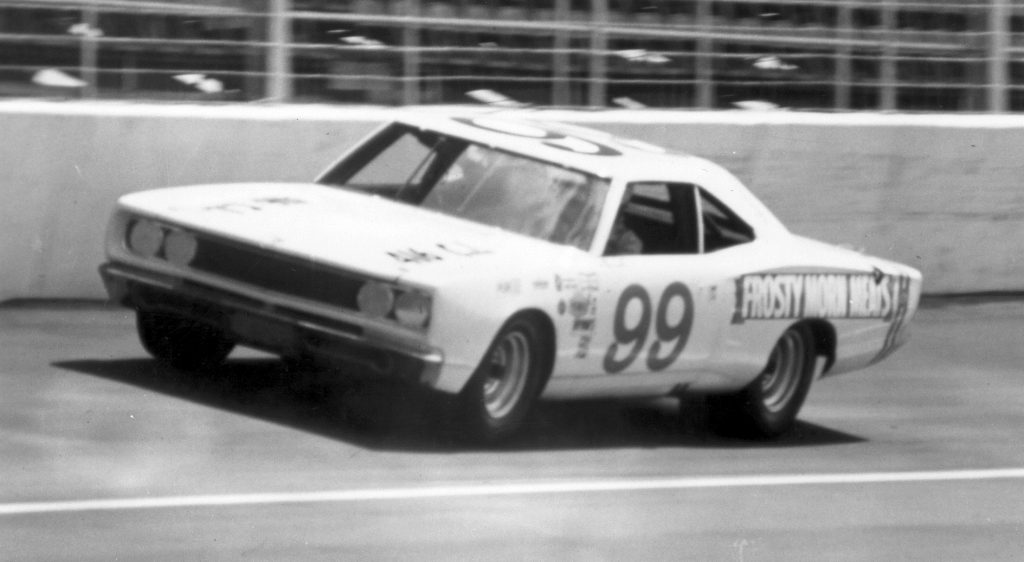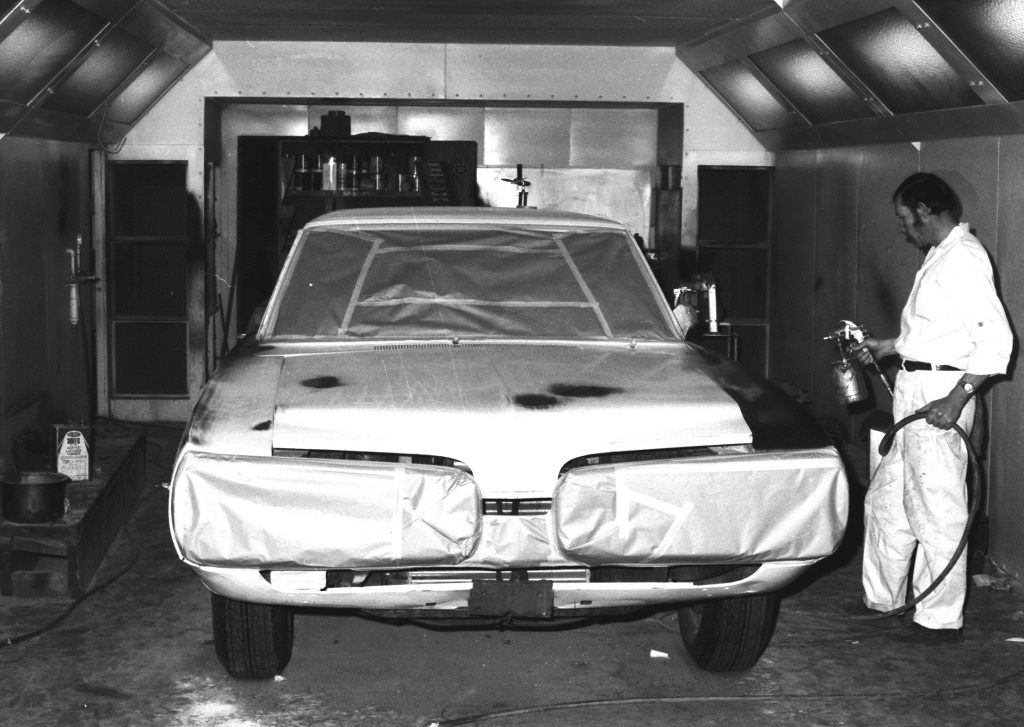Chrysler’s Stock Car Connection — Part 15
Prepping for ’68: Fresh off their Stock Car championship, Chrysler runs smack into challenges before even setting a wheel on the track.
By Wm. R. LaDow Photos from “Conversations with a Winner—The Ray Nichels Story.”

Although Nichels Engineering and Chrysler Corporation’s efforts secured a stellar performance in auto racing circles in 1967, this was not the case for Chrysler as a carmaker and the American auto industry in general. Even though car sales were up for the “Big Three” through the first three quarters of 1967, labor relations for the automakers had become terribly hostile by September. This hostile atmosphere later erupted into what would become known as the “Detroit Rebellion.”
Labor Days
In 1967, the United Auto Workers (UAW) successfully situated themselves into the best bargaining position they had been in for quite some time. Sales were up in the auto industry along with other durable goods being manufactured across America. The Vietnam War coupled with the increased purchasing power of America’s baby boomers kept the US economy running strongly in a wide variety of business segments. The UAW realized they were coming to the contract bargaining table in a very strong position. When General Motors failed to accept the union’s demands, they were confronted with a terribly nasty company-wide strike beginning on September 6th and lasting until October 22nd.
Following Ford Motor Company’s decision to accept the union’s new labor contract provisions, Chrysler Corporation was next in line as part of the UAW’s pattern bargaining effort. On November 8th, less than four hours before the strike deadline (and after Chrysler’s best October sales month ever,) the United Auto Workers (representing 115,500 Chrysler employees) and the company reached an agreement on a new labor contract ending a 34 hour marathon round-the-clock bargaining session. Chrysler knew it couldn’t afford a strike and as a result was forced to acquiesce to a series of UAW demands, primarily in wage increases and altered work rules. It was a particularly rough final week of negotiations, as some workers had begun to walk off the job five days before the deadline. Even though the contract agreement was signed before the strike deadline, many UAW members weren’t happy with the settlement, and the unauthorized work stoppages eventually closed Chrysler’s auto-assembly operations down. Following the contact ratification however, Chrysler was able to get their production facilities back in operation in short order. In December, General Motors finally signed their new labor agreement. In the case of the three contracts, UAW President Walter Reuther proudly proclaimed to his union members that they had successfully obtained “the greatest gains in the history of UAW bargaining.”

The extensive bargaining with labor, along with increased capital investment needs in the auto industry’s never-ending annual re-tooling cycle, tightened the available money supply for racing during late 1967. As 1968 dawned it appeared that Chrysler management was going to offer funding for the circle track programs managed by Ronney Householder on more of a strategic basis. In the case of Nichels Engineering, that meant they had the go ahead and start supplying James Hylton with new equipment and parts as a full fledged company sponsored race team. The K&K Insurance team would also find itself privy to more corporate support in the form of parts and equipment. This also meant continued funds for supplying long term Chrysler NASCAR teams like Petty Enterprises, Cotton Owens, Tom Friedkin and Mario Rossi’s new race team (replacing the Jon Thorne team.) Householder and Nichels knew they had to offer as many incentives as they could (within the framework of their corporate budget) to attract top-notch race teams. But just as the formula for funding was being finalized, great changes were taking place in the corporate suites of American auto making.
Corporate shakeup
By the first week in February of 1968, significant changes in the corporate management of both the Plymouth Division of Chrysler Corporation and Ford Motor Company had taken place, signaling a change in direction for both companies. On February 6th, Ford convinced Semon “Bunkie” Knudsen to leave General Motors and become its president. Knudsen once again would have the chance to be active in both American and international motorsports, something he had missed since GM left racing in 1963. Nichels and Householder already had a more than capable competitor at Ford in the form of Jacque Passino, the last thing they needed was a renewed focus by Bunkie Knudsen to further fuel the fires of Ford racing.
Although the news that Knudsen was joining Ford was troubling, it wasn’t nearly as staggering as the announcement coming out of the Plymouth Division of Chrysler Corporation. Plymouth’s CEO, Robert Anderson, stunned the entire American auto industry with his announcement that he was leaving Chrysler after 22 years. Anderson was leaving to become the President of North American Rockwell’s Commercial-Products Division and to accept a seat on North American Rockwell’s Board of Directors. It was clear to the country’s top business executives that Anderson, by this move, had become the heir apparent to the CEO’s job at Rockwell, a leader in several high-technology businesses, primarily aerospace. Both Nichels and Householder took Anderson’s exit hard. It was Robert Anderson, an avowed racing enthusiast, who had brought Ronney Householder to Chrysler in 1955. It was also Anderson who supported Householder’s decision to bring Nichels Engineering on board as the prime stock car builder for Chrysler in mid-1963. It was Anderson who had been a major player behind Chrysler’s evolution into a leader in American stock car racing. Bob Anderson always equated winning on race tracks and drag strips as the catalyst behind Chrysler’s continued sales increases. Bob Anderson was a real racer and his absence was going to leave a lasting mark on Plymouth racing. To those in the know, Anderson’s exit left only a few “company racers” at Chrysler and almost all of them were now in the Dodge Division.

While both Householder and Nichels were pleased for Anderson, they recognized that his departure was ominous. Nichels knew that without Anderson, Plymouth would likely begin reducing their financial support affecting several teams, resulting in a climate of increasing greed among certain car owners. In Ray’s case he had to make a key decision. His driver Paul Goldsmith had been a mainstay in NASCAR, piloting nothing but Plymouth Belvederes and GTX’s since the Nichels Engineering changeover to Chrysler in 1963. With reduced funding from Plymouth, Ray would have to decide whether or not to run a car in NASCAR. If he and Goldsmith elected to move away from Plymouth, it would free up Plymouth funding for Tom Friedkin’s team in NASCAR and Norm Nelson’s team in USAC. Nichels’ first challenge for 1968 would be whether or not to field his own Nichels Engineering Plymouth. Fortunately for Ray, Goldsmith recognized Plymouth’s apparent slowing in racing involvement and understood the funding issues clearly. If Paul still wanted to race and he wanted to continue in his role as a prime test driver for Chrysler, he would have to go out and help secure his own sponsorship
Winter buildup
Along with financial challenges, there were also physical challenges surfacing as the Nichels Engineering “Go-Fast Factory” winter car-building program ramped up. First the Dodge Charger had been completely restyled going from a fastback body style to a semi-fastback body style with a reworked front grille. The new model was sleeker but would still take much testing to learn how to maintain the car’s downforce. The first production run of approximately 50 “body-in-white” 1968 Dodge Chargers, rolled off a production line in Hamtramck, Michigan late in 1967 and were made available for racecar engineering modification. Not long after, the newly designed Plymouth Road Runner (GTX) body-in-white racecars were made available. The Plymouths were even more of a speedway testing challenge as the new models were completely restyled from the initial 1966-1967 Plymouth Belvedere platform. There was much talk within Chrysler of their own race engineering efforts in improving the handling of the newly designed cars, with money, time and effort expended in wind tunnel testing. But the one thing that terribly worried Ray Nichels was that Chrysler appeared to be spending all its research time and effort on racecar chassis engineering. Nichels was seeing virtually no new efforts expended on engine design. It was as if Chrysler’s casting engineers were satisfied with the 1964 tooling efforts that brought about the 426 cubic inch Hemi and saw no reason to improve their designs. Not since the increased horsepower generated by the 405 cubic inch Hemi that had been mandated for smaller tracks during the last couple of seasons, had any real inroads been made in Hemi engine development. Knowing this, Ray didn’t have much time to contemplate about what he didn’t have … with no time to waste, the Nichels staff began in earnest to get ready for the 1968 NASCAR, USAC, IMCA and ARCA race seasons.

Crash course
In the midst of all these new trials and tribulations, Nichels Engineering and Paul Goldsmith in particular, suffered a very close call in late December. Goldsmith, along with his crew chief Mac Howard, was doing tire testing at Riverside International Raceway. While running through the paces out on the 2.7 mile winding road course, Goldy found himself heading into the treacherous 180-degree hairpin turn six at about 110 miles per hour, when his brakes failed. As Paul barreled into the very same turn that cost his good friend Joe Weatherly his life just four years prior, Goldsmith made a snap decision. Rather than hit the wall with the left side of the car as Weatherly had, Paul cranked up his 4,000 pound Plymouth and banked right, trying to force his car into contact off an adjacent wall. His Hemi engine screaming, Goldsmith tried to gear down, forcing the drive shaft to drop out, sending his car against the other retaining wall. The resulting crash catapulted Goldy’s car 20 feet into the air, then plowing it back into the ground, finally resting within a wall of hay bales. The impact of the crash tore Paul from his shoulder harness, throwing him into the roll bar on the right side of the cockpit. Once his pit crew had run the half mile across the road course track to get to him, they found Paul still sitting in the demolished car, adjusting his rear view mirror. Paul would spend several days in the hospital after being diagnosed with injuries to his gall bladder and kidneys. Once the word got back to Ray Nichels, it became his job to call Paul’s wife, Helen, and let her know. Ray’s matter-of-fact approach of opening the conversation with “Helen … your old man owes me another race car …” softened the blow of the news. A relieved Helen Goldsmith would say later, “I knew Paul was going to be alright, because of the way Ray joked about it.”
When Paul was released from the hospital and returned to the “Go-Fast Factory” he learned that his favorite car of the entire Nichels Engineering fleet, his 1967 Plymouth GTX was beyond repair. When he heard Jim Delaney tell the shop crew to start cutting up the No. 99, Paul refused to go back into that part of the shop, because he just couldn’t bear to watch his trusty Mopar being destroyed.
With Paul back in Indiana healing up, the new race season was starting.

In NASCAR, the year’s schedule included 49 races with one road course event at Riverside, six contests on dirt tracks and the balance on paved ovals. Daytona once again was the anchor of the schedule, with the entire racing community watching closely on how the upcoming season would shape up at the “Big D” in February. The USAC schedule consisted of 22 races, (including the Pike’s Peak Hill Climb) with the opener being run on January 28th at Phoenix. After Phoenix, there was a three month void in the schedule (to allow for many of the drivers to participate in the Indianapolis 500) before racing resumed at Indianapolis Raceway Park. The season then ran until late October finishing up at New Bremen, Ohio. Paved ovals, dirt tracks and road courses were all represented in the schedule, with the Milwaukee Mile once again hosting USAC on four separate occasions.
Team shuffle
Chrysler race team activities seemed much more animated than the season before. Driver and owner changes made things quite interesting during the off season. The Chrysler contingent for the upcoming stock car season was primarily centered on Dodge products. In NASCAR, K&K Insurance’s Harry Hyde announced that with full Chrysler corporate support, (former Nichels driver) Bobby Isaac would run the entire race schedule in Nord Krauskopf’s team’s first full scale attempt at capturing the season championship. Joining the K&K team as the newest addition to Dodge’s corporate sponsorship stable was James Hylton who as an independent had finished second in points in the 1967 season championship and was 1966 NASCAR Rookie of the Year. Hylton visited the “Go-Fast Factory” on January 10th, to pick up his Nichels-built Charger, a 1967 model driven by Don White en route to his USAC national championship a year before. Hylton would run the 1967 Nichels Charger until his 1968 model was ready later in the season. Cotton Owens was starting the season with another up and coming driver, Buddy Baker.
On the Plymouth side of the Chrysler equation, Petty Enterprises would be the centerpiece of the effort. Richard Petty’s performance in 1967 was one that legends are made of and the Petty’s once again promised to be the most formidable team in stock car racing. Tom Friedkin’s Plymouth team started the new race season by unexpectedly, and with little public justification, sacking Jim Paschal after he had won a total of six races for them in 1966 and 1967. There was talk that Chrysler was trying to move to younger, more aggressive drivers. As a result, Charlie Glotzbach, who was 11 years younger that Paschal, was named the replacement. Friedkin also planned on entering a second car for the season with west coast racer driver and a long time Friedkin associate, Jerry Grant behind the wheel. A new Plymouth entry that surfaced during the off season was the Mario Rossi Automotive Engineering team out of South Carolina. Rossi had been a mechanic for Nichels’ friend Bud Moore running Mercurys until he started to wrench for Jon Thorne’s team in 1967 when LeeRoy Yarbrough was behind the wheel. The Rossi driver for the upcoming season was Hoosier Darel Dieringer, who had worked with Rossi prior and had finished the 1967 season driving for Cotton Owens.
The last major team for Plymouth was still in doubt until a mid-January, when following the creation of a business plan and a series of presentations, resulted in Paul Goldsmith closing a deal with Neuhoff Industries of Roanoke, Virginia. Neuhoff, a family owned company, with sales in the hundreds of millions of dollars, agreed to sponsor Paul Goldsmith’s No. 99 Nichels Engineering Plymouth Road Runner through two of their subsidiaries, Valleydale Packers and Frosty Morn Meats, Incorporated. Neuhoff, a recognized leader in the marketing and advertising of meat products, saw auto racing as an excellent venue for its product line. With plants in Quincy and Miami, Florida; Clarksville, and Union City, Tennessee; Salem and Bristol, Virginia; Montgomery, Alabama, and Kinston, North Carolina; the demographics for racing in the southeastern United States, couldn’t be better. With sponsorship for Paul car’s now contracted, Jim Delaney and Mac Howard put the finishing touches on the Nichels Engineering Road Runner, as it was prepared for Paul’s first race of 1968, the Daytona 500.

